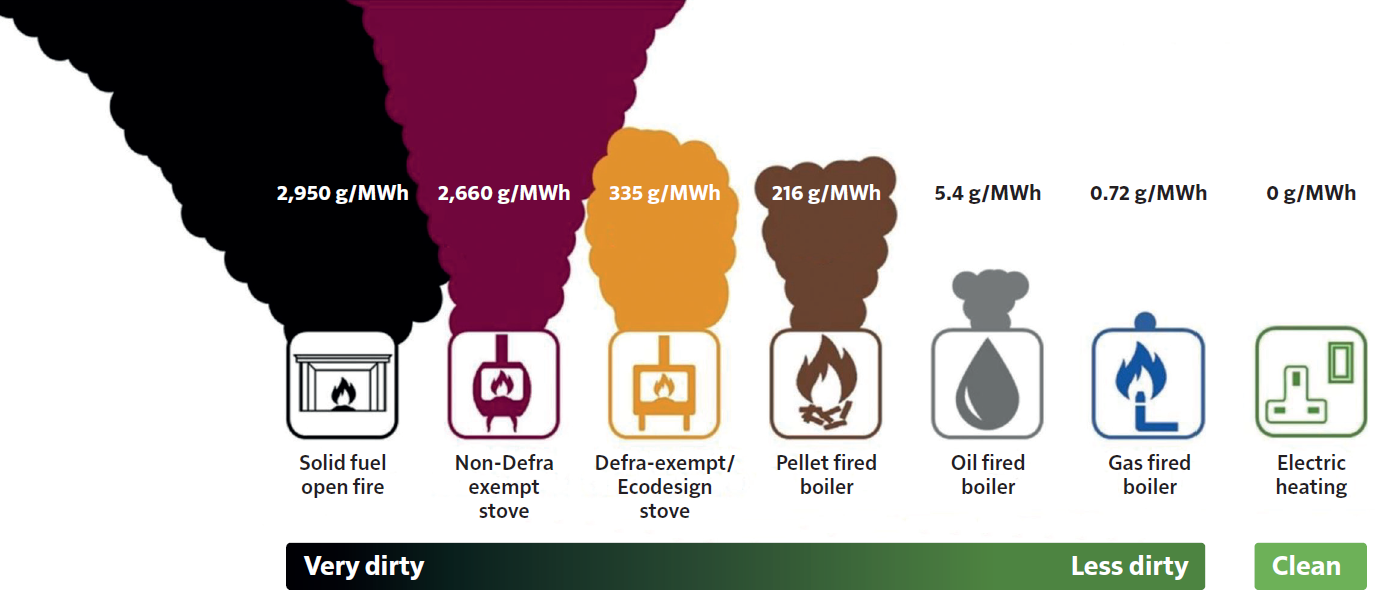Wet wood contains moisture which loses heat and creates smoke and harmful particulates when burned that can damage your appliance, chimney and most importantly your health. Drier wood will also burn more efficiently and hotter.
Follow these few steps to ensure your firewood is seasoned before burning:
- Do not closely cover logs
- Allow air to circulate
- Do not store on wet ground
- Store firewood off the ground
- Do not store logs open to the elements
- Protect your logs from direct rain
- Do not use fresh logs first
- Keep the newest wood at the bottom of the pile and oldest wood at the top
Remember: ventilation, elevation, elements, location and stock rotation.
Finally, check the wood with a moisture meter. It is recommended you check ‘Ready to Burn’ wood to ensure it has been stored correctly and still contains a moisture content less than 20%.
Head to the Woodsure website for guidance on how to use a moisture metre.
Benefits of burning dry firewood:
- Reduced environmental impact
- Increased heat output
- Easier to light the fire
- Less smoke
- Less deposits of soot on the stove door and chimney

